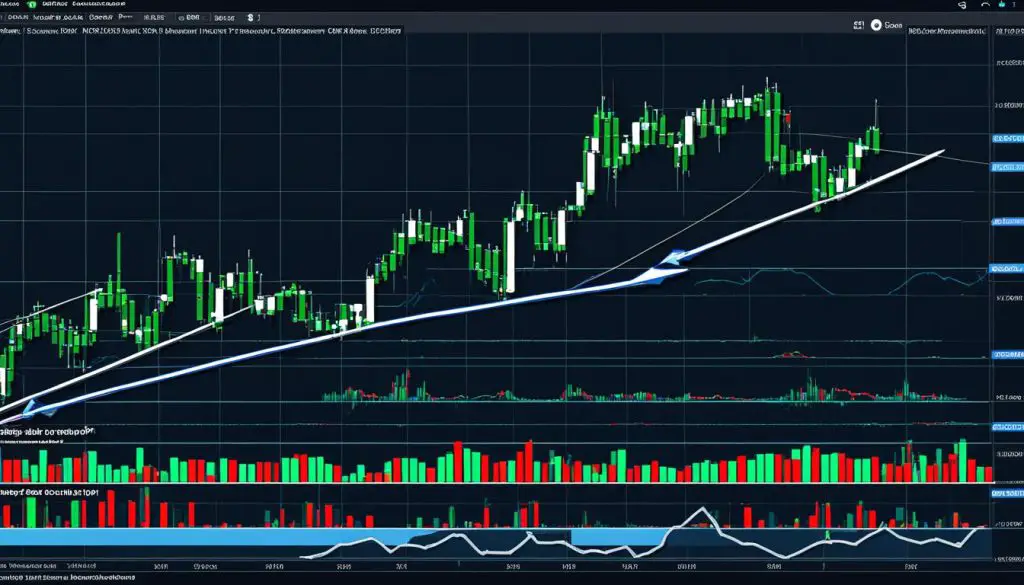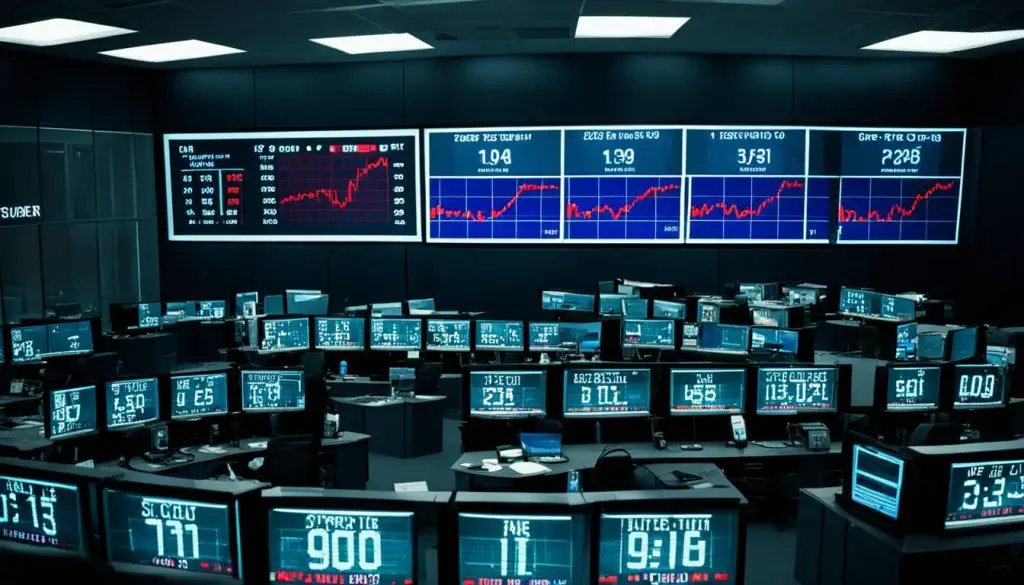Within the intricate web of global finance, commodity trading risk management stands out as a critical endeavor for industries that face the brunt of market fluctuations, such as energy, agriculture, and production. The past year has illuminated the harrowing potential for commodity prices to swing dramatically—by up to 70% in some instances—necessitating robust risk management in commodity trading. This volatile landscape compels businesses to craft and implement sophisticated commodity risk management strategies to shield profitability and stabilize costs amidst the relentless tide of market variability.
Fighting against these volatile winds, companies are steadily investing in dedicated risk management departments. Through a diverse arsenal that includes hedging, vigilant monitoring of price forecasts, an embrace of diversification, and a commitment to operational flexibility, these teams work to navigate and mitigate the different types of risks inherent to commodity trading. The payoff is strategic resilience that can mean the difference between financial security and unanticipated losses.
Understanding Commodity Risk in Various Industries
The intricacies of commodity market risk management are expansive and particularly critical in today’s global economy. Understanding and managing risks associated with commodity trading require sophisticated analysis and strategic tools. This understanding is pivotal for industries deeply affected by volatility in commodity prices, availability, and geopolitical factors.
Price, Quantity, Cost, and Political Risks
When analyzing commodity trading risk, it’s essential to divide it into four primary categories: price risks, emanating from unpredictable global market trends; quantity risks, resulting from variations in production yields or consumption patterns; cost risks, which are associated with fluctuating transportation and production expenses; and political risks, arising from governmental policy shifts. Identifying these risks is the first step toward effective management, which often involves leveraging various commodity risk management tools to anticipate and mitigate potential losses.
Impacts on Energy, Agriculture, and Production Sectors
The ripple effects of commodity risk span several key industries, prompting a need for robust commodity trading risk analysis. The energy sector, for instance, grapples with fluctuating oil and gas prices which affect production costs and competitiveness. In agriculture, unpredictable weather patterns pose quantity risks that can devastate crop yields. Similarly, the production sector faces raw material scarcity, driving up costs and stretching lead times, complicating the supply-demand equilibrium.
The following table highlights the different types of risks across these sectors and the tools commonly employed to manage them.
| Risk Type | Energy Sector | Agriculture Sector | Production Sector | Risk Management Tool |
|---|---|---|---|---|
| Price Risk | Futures Contracts | Commodity Swaps | Hedging with Derivatives | Price Monitoring Systems |
| Quantity Risk | Strategic Reserves | Weather Derivatives | Demand Forecasting | Production Flexibility |
| Cost Risk | Transportation Agreements | Input Cost Insurance | Supplier Diversification | Operational Efficiency Analysis |
| Political Risk | Regulatory Change Assessment | Crop Insurance Programs | Continuity Planning | Geopolitical Risk Evaluation |
In navigating the landscape of commodity market risk management, industries are increasingly turning to advanced commodity risk management tools to provide a buffer against market unpredictability. This proactive approach enables businesses to operate with greater assurance, regardless of external variables. A comprehensive understanding of such tools, along with dedicated analysis, forms the bedrock of a sound risk management strategy.
The Cornerstones of Commodity Trading Risk Management
Effective commodity price risk management draws its strength from foundational elements integral to sustaining market competitiveness. A symbiotic relationship between risk management practices and company ethos is paramount to not only survive but thrive amidst the uncertainties of commodity trading. This necessitates the deployment of commodity risk management techniques attuned to the organization’s strategic vision and the creation of teams whose expertise is specifically tailored to mitigate trading risks. Let’s delve deeper into how these cornerstones shape a robust risk management infrastructure.
Aligning Risk Management with Business Strategy
Consistency between risk management systems and broader business objectives is not merely beneficial; it’s essential. Companies striving for excellence in commodity trading risk mitigation aim to achieve the best possible confluence of competitive pricing, quality goods, and reliable supply chains. Integrating risk management with strategic business planning enables a company to navigate market fluctuations with precision and allows for proactive adjustments in response to economic signals.
Building a Specialized Risk Management Team
On the frontline of defense against market volatility stands the specialized risk management team. Cultivating a cohort of professionals with deep insights into commodity trading nuances separates the proactive from the reactive. These teams possess the agility to recalibrate strategies following disruptions or unexpected price shifts in raw materials, maintaining the fiscal balance necessary for long-term success.
| Strategic Business Initiative | Risk Management Approach |
|---|---|
| Optimizing procurement costs | Implementing price forecast models and early warning systems |
| Diversifying supplier Base | Engaging in multi-source contracting to mitigate supplier risks |
| Expanding into new markets | Conducting geopolitical risk analysis and setting contingency reserves |
| Enhancing product quality | Applying strict quality control and supplier accountability measures |
- An effective business strategy closely weaves in aspects of contingency planning, ensuring resilience against unanticipated market conditions.
- Organizational growth targets are calibrated with a clear understanding of market risk profiles, forging paths that favor stability during turbulent phases.
- Risk management objectives are mirrored in customer satisfaction goals, seeing that an unblemished brand reputation is preserved despite external pressures.
Hedging: A Premiere Strategy in Commodity Risk Management
In the sphere of commodity trading and risk management, hedging stands as a pivotal strategy for those seeking to mitigate financial exposure and enhance fiscal stability amidst market volatility. By employing hedging strategies, traders can shield themselves against potential disruptions by laying out a blueprint for financial resilience. This strategy isn’t merely a reactive measure, but rather a proactive commitment to risk assessment in commodity trading, quelling the unpredictability that often besets the commodity markets.
At the core of hedging is the utilization of futures contracts. These financial instruments serve as a form of insurance against price oscillations that could unfavorably impact a company’s bottom line. Through futures, organizations secure a predetermined price for a commodity, thus insulating themselves from future price surges and the resultant cost instability they might bring about.
- Product Diversification: This facet of hedging enables companies to spread their investment across various commodities or diverse markets, reducing the likelihood that a sharp decline in one sector could cause significant financial distress.
- Price Targeting: By setting specific price goals for purchases or sales, traders can more effectively manage budget forecasts and protect their business from unexpected market swings.
- Market Monitoring: Keeping a close eye on indicators such as industrial activity, global economic signals, and supply chain dynamics allows traders to react to shifts with informed confidence.
Furthermore, an effective hedging strategy might also involve the strategic storage of products. This approach grants the ability to harness periods of favorable pricing, effectively turning the volatility of the markets into a potential profit opportunity rather than a risk factor. Lastly, sourcing diversification acts as another layer of defense against the caprice of overreliance on a single volatile commodity, thereby fortifying the company’s operational resilience.
In essence, a comprehensive approach to hedging in commodity trading can prove to be a cornerstone of prudent fiscal planning. By foreseeing future pricing trends and laying down an economic bulwark with these techniques, businesses can steer through the tumultuous waters of commodity trading with a greater degree of certainty and control. By warding off the risks associated with price fluctuations and supply chain shocks, companies cement their standing in a competitive marketplace—ready to capitalize on opportunities while hedged against potential pitfalls.
Analyzing Key Factors Influencing Commodity Prices
In the dynamic realm of commodity trading, recognizing the key drivers of market fluctuations is crucial for implementing adept commodity trading risk management strategies. Strong industrial activity, especially from major global manufacturing hubs, directly influences demand cycles for various commodities. Moreover, the comprehensive health of the global economy acts as a barometer for market confidence, significantly impacting commodity prices. Thus, astute market surveillance is indispensable to ensure that commodity trading risk management practices are not only reactive but anticipatory in nature.
Additionally, an industry’s momentum can either hasten or dampen commodity price movements. For instance, a technological breakthrough in energy extraction can have a pervasive effect, rippling through market prices. Conversely, market volatility can be exacerbated by supply chain disruptions, often stemming from unforeseen political strife or environmental catastrophes. Navigating through these complexities requires a judicious blend of analytics and experience; managers must dissect these broad economic signals to accurately forecast market trends and realign their trading maneuvers accordingly.
In conclusion, market volatility represents both a challenge and an opportunity within commodity trading risk management. It’s essential that those at the helm of commodity trading desks maintain an eagle-eyed view over the global economic landscape. By doing so, they harness deep insights into price shift indicators and wield the tools and tactics necessary to secure profitability while navigating the capricious waves of commodity markets.
FAQ
The primary strategies include hedging using futures contracts to lock in prices, diversification of products and suppliers to minimize dependency on one source, and thorough risk assessment to prioritize and plan for potential market changes. Implementing operational flexibility and continuously monitoring price forecasts are also crucial.
A specialized risk management team provides expertise in identifying, assessing, and mitigating risks associated with commodity trading. This team plays a critical role in formulating strategies to stabilize costs, manage cash flow, and optimize procurement in alignment with the organization’s financial goals and market dynamics.
Hedging is used to protect against price swings by locking in future commodity prices through futures contracts. It effectively provides a financial safeguard by ensuring price certainty, thereby helping commodity traders manage their exposure to price volatility.
Traders should analyze globally influential factors such as industrial activity, economic health indicators, sector momentum, and supply chain disruptions. Understanding these factors helps in anticipating market trends and price movements, thus allowing for proactive risk management.






